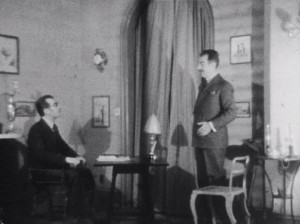
Filmmaker Émile Gallet plays dual roles in this film as a antique dealer offering a promotion for his store's thirteenth year, and a customer who attempts to cash in on the prize. The film is spliced in two to allow Gallet to perform against himself, and features hand-written intertitles in both French and English.
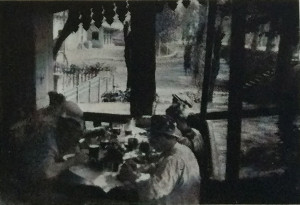
"a soggetto"/fiction
Vita, regia di Enrico Parnigotto e Fernando De Marzi. L'azione del film ha luogo in un'officina, e la trama e imperniata sulla figura di un operaio la cui moglie attende di essere madre. Egli va al lavoro come ogni mattina ma appare piuttosto preoccupato fino a ehe gli giunge la notizia della nascita di un maschio e il direttore della azienda gli concede libera uscita. L'azione è narrata con molta semplicita, e pur procedendo in taluni punti con qualche incertezza, non manca di qualche inquadratura efficace.
Vita, directed by Enrico Parnigotto and Fernando De Marzi. The action of the film takes place in a workshop, and the plot hinges on the figure of a worker whose wife is waiting to be a mother. He goes to work as every morning but appears rather worried until he gets the news of the birth of a boy and the director of the company grants him leave. The action is narrated with much simplicity, and while proceeding at some points with some uncertainty, does not lack some effective framing.
—Il ventuno 26 (Review of the G.U.F. of Venice) March 1935
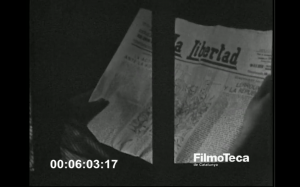
(Catalan): Film humorístic amateur, en el qual l'autor especula, irònicament, amb el significat literal dels diaris de l'època (1934), com per exemple, un presoner està llegint el diari LA LIBERTAD darrera de les reixes de la presó.
Film about the social impact of newspapers in the everyday life of the interwar period. It mixes fiction with documentary styles and warns against the political implication of mass media, especially in relation to their effect on workers, from a conservative perspective. [Description from the Filmoteca de Catalunya catalog]
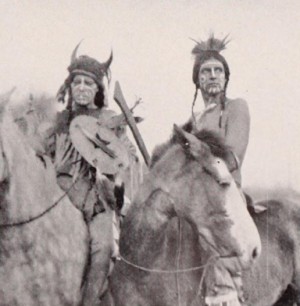
"'Red Clouds Rides Again,' the 8mm picture by Dr. Loscher which was given first prize, was based on a poem that dealt with the pioneers crossing the desert. Its main action had to do with a wagon train being attacked by Indians. The manner in which Dr. Loscher handled this sequence would have done credit to a studio production. With only one wagon, three horses and six people at his command, he made it look like a production employing more in the way of properties and talent. His angles, his composition and his cutting are things for every amateur to observe. His story could have easily become hackneyed by poor cutting and editing, but he kept it moving at a fine tempo." American Cinematographer, Jan. 1936, 24.
"'Moods of Nature' by Paul Brunford, recently won a prize in the Institute of Amateur Cinematographers' contest in England. Not only does Brunford show a fine sense of rhythm, but a keen eye for composition and a splendid sense of cutting and dramatic values in nature. This picture merely deals with a storm arising and then subsiding. Brunford uses both water and earth to show this. The smashing waves, bending trees and waving wheatfields combine to create his drama. His photography however, is something for which he is to be especially congratulated." American Cinematographer, Jan. 1936, 24.
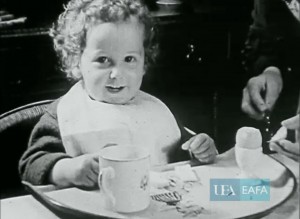
"In the Home Movie field, Lawrenson submitted a fine document of a day with his little 2-year-old daughter. The main portion is given over to a day at the seashore. But he gives reasons for everything he does even to going home. He shows a storm coming up and after the family has arrived safely at home, the little looks out of the window while the raindrops patter on the windowpane." American Cinematographer, Jan. 1936, 24.
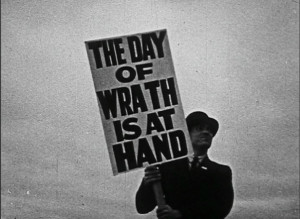
"Science fiction film influenced by the style of inter-war European art cinema." East Anglian Film Archive.
"Each year the contest sponsored by the American Society of Cinematographers through this magazine seems to bring forth a surprise. For several years the 8mm cinematrographers have been setting the pace, but never has any of them reached the goal achieved this year by Miss Ruth Stuart. Miss Stuart has been a contributor to this contest every year for the past three years; in 1933 she was given the medal for travel pictures. Her 200 ft. 16mm subject 'Doomsday' was also awarded honors in the British Institute of Amateur Cinematographers. In the American Society of Cinematographers contest just closed she was given a recognition for the Outstanding picture, in photography and Documentary pictures. It will be surprising to many that this unusual honor should befall a woman. Photography, by the unwritten law, is supposedly the realm of male species. Miss Stuart, however showed such a fine understanding of the value of pictures that move, how to fabricate these moving photographs into an interesting document that would hold any audience anywhere in the civilized world. For a person who films she must have developed a stony heart in order to cut as judiciously as the picture indicates. There is a tempo to the production that is very seldom achieved by an amateur. There are no obvious pet shots or scenes. Each sequence, each scene, each picture was left in production for a purpose to give it atmosphere to help the story along." American Cinematographer, Jan. 1937, 25.
"Well photographed, well planned film dealing with the contrasted fears of town and country folk and their reaction to catastrophe" (IAC 1975).
‘A fantasy based upon a fear which has preyed upon credulous minds from the beginning of time' is the maker's description of this ambitious attempt to show how people react to the possibility of a catastrophe and then to the real event. The story hinges upon a cosmic event that upsets the Earth's equilibrium, causes an imbalance of weather conditions and other natural forces, resulting in widespread panic’ (EAFA Database)."
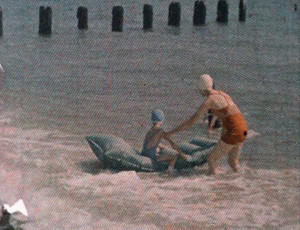
"Nineteen thirties holiday film of the Harrison family at a number of Suffolk coastal holiday hotspots; including Southwold, Lowestoft, the Broads (Beccles), and Thorpeness. This reel, with scenes in both Dufaycolor and black and white, shows the family having a jolly old time bathing, picnicking at their beach hut, horse riding, and sailing. Intertitles include “Susan on the li-lo” and “tea with the mater” (BFI.org.uk)
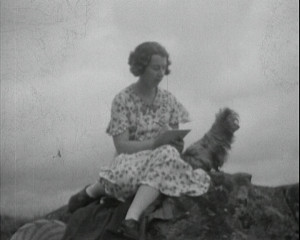
"Amateur filmmaker and cinema historian H.A.V. Bulleid employs rapid montage and a sense of foreboding in this rural tragedy set in the Welsh countryside. On farmland in rural Wales, where crumbling farm buildings reflect the rural desolation, a young lady spends her holidays wandering the fells with her ever reliable dog. When she meets a young farmhand, a romance develops. But as the girl grows closer to the young man, she pays less attention to her dog. And when the dog is left at the farmhouse as the pair goes rock-climbing, tragedy ensues. Sensing a problem, the dog searches the fells as day turns to night. But will he find his master? And will the young lovers survive?" (EAFA Database)
Total Pages: 299